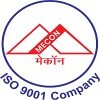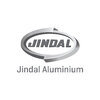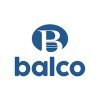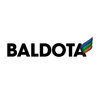Filter interviews by
TRL Krosaki Refractories Interview Questions and Answers
32 Interview questions
The working process involves systematic planning, execution, and evaluation to achieve operational goals efficiently.
1. Planning: Define objectives and strategies, e.g., creating a shift schedule based on staff availability.
2. Coordination: Communicate with team members to ensure everyone is aligned, e.g., holding a pre-shift briefing.
3. Execution: Implement the plan while monitoring operations, e.g., overseeing d...
IRR stands for Internal Rate of Return in project management, which is a metric used to evaluate the profitability of a project.
IRR is a financial metric used to calculate the profitability of an investment or project.
It represents the discount rate that makes the net present value (NPV) of all cash flows from a project equal to zero.
A higher IRR indicates a more profitable project, while a lower IRR may signal po...
Project safety refers to the measures and protocols put in place to ensure the well-being and security of all individuals involved in a project.
Ensuring compliance with safety regulations and standards
Implementing safety training for all project team members
Conducting regular safety inspections and audits
Providing personal protective equipment (PPE) when necessary
Creating emergency response plans and protocols
Exam...
The value of Indian frequency is 50 Hz.
The standard frequency used in India for electrical power distribution is 50 Hz.
This frequency is used for both residential and industrial purposes.
It is important for ensuring compatibility of electrical equipment and appliances.
In contrast, countries like the United States use a frequency of 60 Hz.
Transformer works on the principle of electromagnetic induction to transfer electrical energy between two or more circuits.
Transformers have two coils of wire, known as primary and secondary coils.
When an alternating current flows through the primary coil, it creates a changing magnetic field.
This changing magnetic field induces a voltage in the secondary coil, transferring electrical energy.
The ratio of the numbe...
A magnetic field is a region around a magnetic material or a moving electric charge within which the force of magnetism acts.
A magnetic field is produced by moving electric charges or magnetic materials.
It exerts a force on other moving charges and magnetic materials within its vicinity.
The strength and direction of a magnetic field can be represented by magnetic field lines.
Examples include the Earth's magnetic f...
A magnet is an object that produces a magnetic field and attracts certain materials like iron.
A magnet has two poles - north and south.
Opposite poles attract each other while like poles repel.
Magnets can be natural (lodestone) or man-made (permanent magnets).
The relationship between current, voltage, and resistance is described by Ohm's Law.
Ohm's Law states that the current flowing through a conductor is directly proportional to the voltage applied across it and inversely proportional to the resistance of the conductor.
Mathematically, Ohm's Law is expressed as I = V/R, where I is the current in Amperes, V is the voltage in Volts, and R is the resistance in Ohms.
This r...
Current is the flow of electric charge in a circuit.
Current is the rate of flow of electric charge in a circuit.
It is measured in Amperes (A).
Current flows from positive to negative terminal in a circuit.
There are two types of current - AC (Alternating Current) and DC (Direct Current).
The unit of resistance is ohm (Ω).
The unit of resistance is measured in ohms (Ω).
Resistance is denoted by the symbol 'R' in equations.
One ohm is equal to one volt per ampere (1 Ω = 1 V/A).
TRL Krosaki Refractories Interview Experiences
31 interviews found
(9 Questions)
- Q1. What is the unit of resistance?
- Ans.
The unit of resistance is ohm (Ω).
The unit of resistance is measured in ohms (Ω).
Resistance is denoted by the symbol 'R' in equations.
One ohm is equal to one volt per ampere (1 Ω = 1 V/A).
- Q2. What is the meaning of current?
- Ans.
Current is the flow of electric charge in a circuit.
Current is the rate of flow of electric charge in a circuit.
It is measured in Amperes (A).
Current flows from positive to negative terminal in a circuit.
There are two types of current - AC (Alternating Current) and DC (Direct Current).
- Q3. What is magnet?
- Ans.
A magnet is an object that produces a magnetic field and attracts certain materials like iron.
A magnet has two poles - north and south.
Opposite poles attract each other while like poles repel.
Magnets can be natural (lodestone) or man-made (permanent magnets).
- Q4. What is the working principle of transformer?
- Ans.
Transformer works on the principle of electromagnetic induction to transfer electrical energy between two or more circuits.
Transformers have two coils of wire, known as primary and secondary coils.
When an alternating current flows through the primary coil, it creates a changing magnetic field.
This changing magnetic field induces a voltage in the secondary coil, transferring electrical energy.
The ratio of the number of ...
- Q5. Value of Indian frequency?
- Ans.
The value of Indian frequency is 50 Hz.
The standard frequency used in India for electrical power distribution is 50 Hz.
This frequency is used for both residential and industrial purposes.
It is important for ensuring compatibility of electrical equipment and appliances.
In contrast, countries like the United States use a frequency of 60 Hz.
- Q6. What is the unit of current?
- Ans.
The unit of current is Ampere (A).
The unit of current is Ampere (A)
It is named after the French physicist Andre-Marie Ampere
Current is the flow of electric charge in a circuit
- Q7. What is the meaning magnetic field?
- Ans.
A magnetic field is a region around a magnetic material or a moving electric charge within which the force of magnetism acts.
A magnetic field is produced by moving electric charges or magnetic materials.
It exerts a force on other moving charges and magnetic materials within its vicinity.
The strength and direction of a magnetic field can be represented by magnetic field lines.
Examples include the Earth's magnetic field ...
- Q8. Law's of resistance?
- Ans.
The laws of resistance describe how the resistance of a material is affected by factors such as length, cross-sectional area, and temperature.
Resistance is directly proportional to the length of the material - longer materials have higher resistance.
Resistance is inversely proportional to the cross-sectional area of the material - larger cross-sectional areas have lower resistance.
Resistance increases with temperature ...
- Q9. Relationship between current, voltage and resistance?
- Ans.
The relationship between current, voltage, and resistance is described by Ohm's Law.
Ohm's Law states that the current flowing through a conductor is directly proportional to the voltage applied across it and inversely proportional to the resistance of the conductor.
Mathematically, Ohm's Law is expressed as I = V/R, where I is the current in Amperes, V is the voltage in Volts, and R is the resistance in Ohms.
This relati...
I appeared for an interview in Apr 2025, where I was asked the following questions.
- Q1. Why you want to join sale?
- Ans.
I want to join sales to leverage my passion for travel and help clients create unforgettable experiences while achieving my career goals.
I have a strong passion for travel, which drives my desire to help others explore the world.
Sales in the travel industry allows me to connect with diverse clients and understand their unique needs.
I enjoy building relationships and providing personalized recommendations, ensuring clie...
- Q2. Have you visited any destination?
- Ans.
Yes, I've explored the vibrant streets of Barcelona, soaking in its rich culture, stunning architecture, and delicious cuisine.
Visited the iconic Sagrada Familia, a masterpiece by Antoni Gaudí.
Strolled through the historic Gothic Quarter, admiring its medieval architecture.
Enjoyed authentic tapas at local eateries, experiencing the culinary delights of Spain.
Relaxed at Park Güell, surrounded by Gaudí's colorful mosaics...
I appeared for an interview in Mar 2025, where I was asked the following questions.
- Q1. Describe working process.
- Ans.
The working process involves systematic planning, execution, and evaluation to achieve operational goals efficiently.
1. Planning: Define objectives and strategies, e.g., creating a shift schedule based on staff availability.
2. Coordination: Communicate with team members to ensure everyone is aligned, e.g., holding a pre-shift briefing.
3. Execution: Implement the plan while monitoring operations, e.g., overseeing daily ...
- Q2. Material chemistry.
- Q3. Safety procedures.
Interview Preparation Tips
(2 Questions)
- Q1. Why you want to join in TRL.
- Ans.
I want to join TRL because of its reputation for innovation and commitment to security excellence.
TRL has a strong reputation for innovation in the security industry
I am impressed by TRL's commitment to excellence in security practices
I believe TRL offers opportunities for professional growth and development
- Q2. What is your weaknesses
- Ans.
One of my weaknesses is that I can be overly critical of my own work.
I tend to be a perfectionist and can spend too much time on a task to ensure it is flawless.
I sometimes struggle with delegating tasks because I want to make sure they are done correctly.
I am working on improving my ability to accept constructive criticism and not take it personally.
Interview Preparation Tips
I appeared for an interview in Jan 2025.
Work experience related
(2 Questions)
- Q1. Sallery negotiations
- Q2. Facilities services
- Q1. What actions should be taken in the event of a cost overrun or time overrun?
- Ans.
Addressing cost and time overruns requires proactive management, communication, and strategic adjustments to keep projects on track.
Conduct a thorough analysis to identify the root causes of the overrun, such as unexpected expenses or delays in project phases.
Engage with stakeholders to communicate the situation transparently and discuss potential impacts on project deliverables.
Reassess project scope and priorities; c...
- Q2. What is the best strategy for planning site activities when faced with challenging targets?
- Ans.
Effective planning under challenging targets requires strategic prioritization, resource allocation, and continuous monitoring.
Set clear, achievable goals: Break down targets into smaller, manageable tasks. For example, if the target is to increase sales by 20%, set monthly sales goals.
Prioritize tasks based on impact: Focus on high-impact activities first. For instance, prioritize client meetings that could lead to si...
Aptitude test was easy and online test was taken
(2 Questions)
- Q1. Thermodynamics What is property What is state Laws of TD
- Ans.
Properties in thermodynamics refer to characteristics of a system, state refers to the condition of a system at a specific time, and laws of thermodynamics govern energy transfer and transformation.
Property in thermodynamics: Any characteristic of a system that can be measured, such as temperature, pressure, or volume.
State in thermodynamics: The condition of a system at a specific time, described by its properties.
Law...
- Q2. SOM questions Modulous of rigidity Stiffness
(2 Questions)
- Q1. What are your further plans?
- Ans.
I aim to enhance operational efficiency, develop leadership skills, and contribute to strategic growth in the organization.
Pursue advanced training in operations management to refine my skills.
Implement process improvement initiatives, like Lean Six Sigma, to boost efficiency.
Mentor junior team members to foster a collaborative work environment.
Engage in cross-departmental projects to gain a holistic understanding of t...
- Q2. Ready or not for relocation.
- Ans.
Yes, I am open to relocation as it aligns with my career goals and personal growth aspirations.
Relocation offers new challenges and opportunities for professional development.
I have previously relocated for a job, which helped me adapt to new environments quickly.
Being open to relocation allows me to contribute to different teams and projects effectively.
I believe that experiencing diverse work cultures enhances my ski...
Interview Preparation Tips
(2 Questions)
- Q1. What is casting
- Ans.
Casting is the process of creating objects by pouring a liquid material into a mold and allowing it to harden.
Casting involves pouring a material such as metal, plastic, or concrete into a mold
The material then hardens and takes the shape of the mold
Common examples of casting include metal casting for manufacturing parts and concrete casting for construction projects
- Q2. What is the difference between drilling and boring
- Ans.
Drilling is the process of creating a hole using a rotating cutting tool, while boring is the process of enlarging an existing hole.
Drilling is typically used to create holes in materials, while boring is used to enlarge existing holes.
Drilling is usually done with a drill bit, while boring is done with a boring tool.
Drilling is often used in construction and manufacturing, while boring is commonly used in machining pr...
Skills evaluated in this interview
(1 Question)
- Q1. General HR question
(1 Question)
- Q1. General HR question with MD interaction
I appeared for an interview in Jan 2024.
(1 Question)
- Q1. LPG yard and gas line
Top trending discussions






TRL Krosaki Refractories Interview FAQs
The duration of TRL Krosaki Refractories interview process can vary, but typically it takes about less than 2 weeks to complete.
Tell us how to improve this page.
TRL Krosaki Refractories Interviews By Designations
- TRL Krosaki Refractories Manager – Electrical Interview Questions
- TRL Krosaki Refractories Shift Officer Interview Questions
- TRL Krosaki Refractories Key Account Manager Interview Questions
- TRL Krosaki Refractories Officer Interview Questions
- TRL Krosaki Refractories Office Trainee Interview Questions
- TRL Krosaki Refractories Project Manager Interview Questions
- TRL Krosaki Refractories Graduate Trainee Interview Questions
- TRL Krosaki Refractories Team Manager Interview Questions
- Show more
Interview Questions for Popular Designations
Overall Interview Experience Rating
based on 33 interview experiences
Difficulty level
Duration
Interview Questions from Similar Companies
TRL Krosaki Refractories Reviews and Ratings
based on 314 reviews
Rating in categories
|
Assistant Manager
127
salaries
| ₹4.7 L/yr - ₹10.4 L/yr |
|
Senior Officer
90
salaries
| ₹4 L/yr - ₹8.2 L/yr |
|
Officer
81
salaries
| ₹3.5 L/yr - ₹7.5 L/yr |
|
Deputy Manager
55
salaries
| ₹7.8 L/yr - ₹14.3 L/yr |
|
Manager
39
salaries
| ₹6.5 L/yr - ₹15 L/yr |

Hindustan Zinc

INDO-MIM

Vedanta Resources

Carborundum Universal Limited
- Home >
- Interviews >
- TRL Krosaki Refractories Interview Questions













